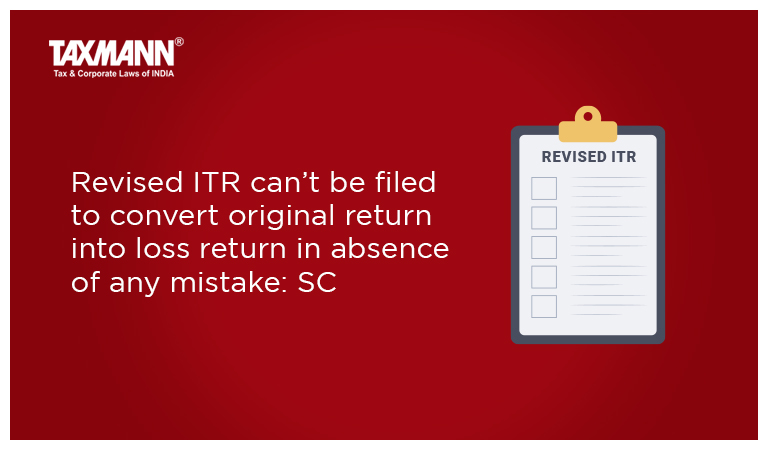Revised ITR can’t be filed to convert original return into loss return in absence of any mistake: SC
- Blog|News|Income Tax|
- 2 Min Read
- By Taxmann
- |
- Last Updated on 13 July, 2022
Case Details: PCIT v. Wipro Ltd. - [2022] 140 taxmann.com 223 (SC)
Judiciary and Counsel Details
-
- M.R. Shah & B.V. Nagarathna, JJ.
Facts of the Case
Assessee-Wipro Ltd. was a 100% export-oriented unit and engaged in the business of running a call centre and IT Enabled and Remote Processing Services. It filed return of income declaring loss and claimed exemption under section 10B.
Assessee stated that no loss was being carried forward as the assessee was 100% export-oriented unit and entitled to claim an exemption under Section 10B. However, later assessee filed a revised return of income demanding carry forward of losses by not claiming exemption under section 10B.
The Assessing Officer (AO) rejected the claim of carrying forward of loss as the revised return of income can be filed under Section 139(5) only to remove the omission and mistake and/or correct the arithmetical error. It cannot be filed for altogether a new claim.
The matter reached High Court wherein the court allowed relief to the assessee. Aggrieved-AO filed the instant appeal before the Supreme Court of India.
Supreme Court Held
The Supreme Court of India held that the assessee filed its original return under section 139(1) and not under section 139(3), i.e., return of loss. Thus, AO was right in submitting that the revised return filed under section 139(5) can only substitute its original return under Section 139(1) and cannot transform it into a return under Section 139(3).
The assessee can file a revised return in a case where there is an omission or a wrong statement. But a revised return of income, under Section 139(5) cannot be filed, to withdraw the claim and subsequently claim the carried forward or setoff of any loss.
Filing a revised return under Section 139(5) and taking a contrary stand and/or claiming the exemption, which was specifically not claimed earlier while filing the original return of income is not permissible.
Accordingly, the order passed by the High Court taking a contrary view was to be set aside and the claim of the assessee to be denied.
Disclaimer: The content/information published on the website is only for general information of the user and shall not be construed as legal advice. While the Taxmann has exercised reasonable efforts to ensure the veracity of information/content published, Taxmann shall be under no liability in any manner whatsoever for incorrect information, if any.

Taxmann Publications has a dedicated in-house Research & Editorial Team. This team consists of a team of Chartered Accountants, Company Secretaries, and Lawyers. This team works under the guidance and supervision of editor-in-chief Mr Rakesh Bhargava.
The Research and Editorial Team is responsible for developing reliable and accurate content for the readers. The team follows the six-sigma approach to achieve the benchmark of zero error in its publications and research platforms. The team ensures that the following publication guidelines are thoroughly followed while developing the content:
- The statutory material is obtained only from the authorized and reliable sources
- All the latest developments in the judicial and legislative fields are covered
- Prepare the analytical write-ups on current, controversial, and important issues to help the readers to understand the concept and its implications
- Every content published by Taxmann is complete, accurate and lucid
- All evidence-based statements are supported with proper reference to Section, Circular No., Notification No. or citations
- The golden rules of grammar, style and consistency are thoroughly followed
- Font and size that’s easy to read and remain consistent across all imprint and digital publications are applied








 CA | CS | CMA
CA | CS | CMA


